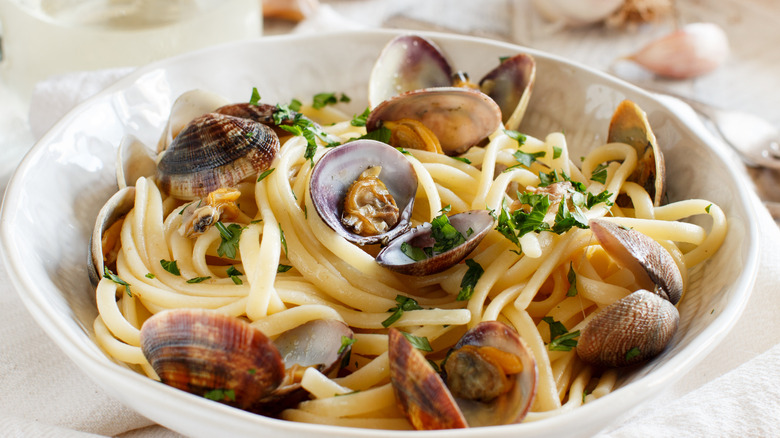Why Rachel Ray Thinks You Should Put Anchovies In Your Pasta
Think politics is divisive? Food can be a really polarizing conversational gambit, especially if the subject is an ingredient like anchovies (per Town & Country Magazine). Everyone seems to have an opinion about the unattractive, assertive, salty little fishes – and it's generally not middle of the road, as in, "I can take them or leave them.” People either love anchovies or love to hate them. (Have the haters even tried anchovies? That's a question for another day.)
According to Food & Wine, chefs prize anchovies – and not just to plop on top of pizza and drop in Caesar salad. They're complex and add a flavor punch to broths, sauces, salsas, tapenades, toasts – the list goes on. Spanish-born chef José Andrés, who has put the foods of his native country on the map in the United States, shows anchovies lots of love. "In Spain, you can go into any tapas bar and you'll see anchovies all over the menu,” he once said in an email, according to an Associated Press report (via The Spokesman).
Author and celebrity chef Rachael Ray is enthusiastic about anchovies, as well. She says they're misunderstood little fishies, but once you start adding them to pasta, you could, well, get hooked (per Instagram).
There's something extra fishy about Rachael Ray's linguine with clams
Rachael Ray is no newbie fan of anchovies. She and Ted Allen talked them up as a secret sauce ingredient on "The Rachael Ray Show," and she walked her TV audience through the steps of making Anchovy Breadcrumb-Stuffed Artichokes in a different segment. They even serve as an ingredient in Ray's Caesar-style deviled eggs. Recently on Instagram, she made one of her husband's favorite meals, Linguine con Vongole (linguine with clams), and once again advocated on behalf of the often-maligned fish.
Ray describes her pasta as "one shell of a dish,” but anchovies play a supporting role. She starts with a mix of olive oil, butter, and a generous amount of grated garlic in a pan. She then reaches for a jar of anchovies, spears some with a fork, drops them in the pan with the oil and garlic sauce, and breaks them up a bit. The goal is for the anchovies to "melt” or fade into the sauce.
"What do I mean by melt?” Ray says. "I mean really melt. Anchovies dissipate and melt into whatever fat you're using, olive oil, butter, or a combination of the two. ... And anchovies, if you think you don't like them, you might be surprised if you start cooking with them because they taste more akin to salted toasted nuts. They don't taste fishy. They're just a natural salt.”

